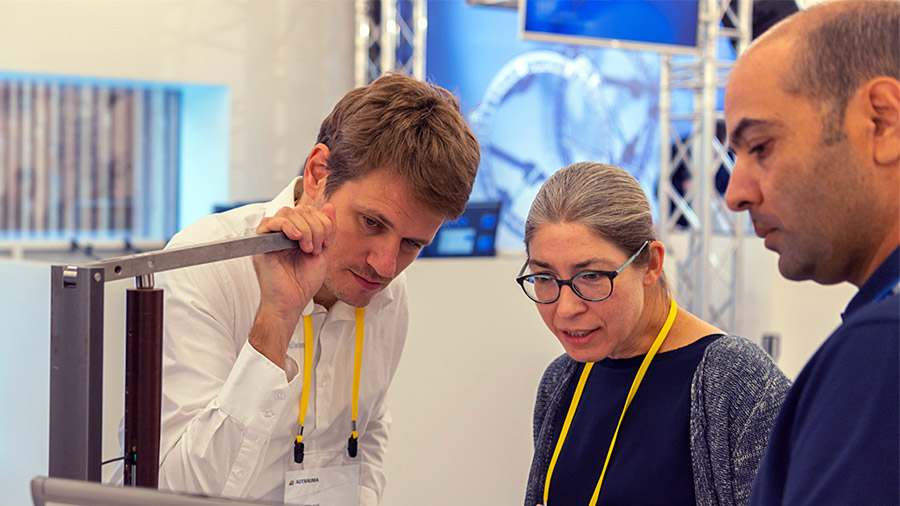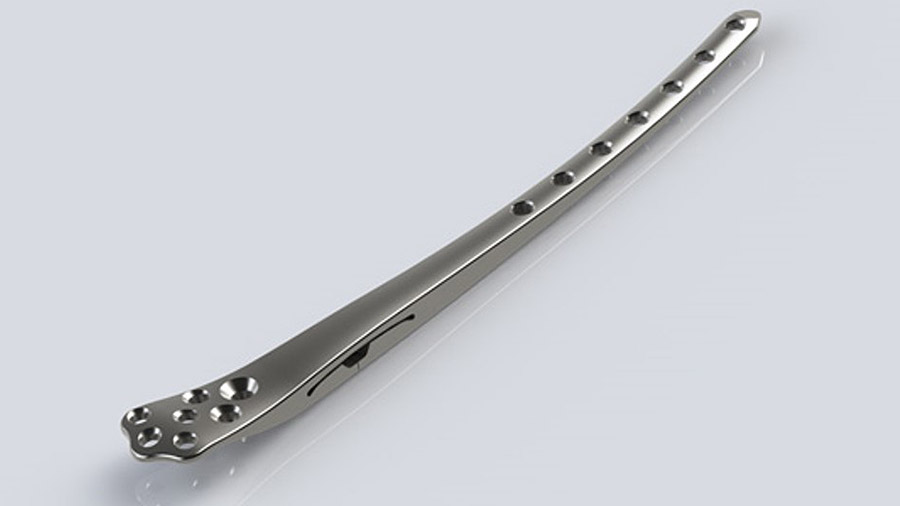Biphasic plate

Windolf (left) and Epari (right) demonstrate the biphasic plate during the AO Davos Courses 2018
Fast, robust healing of long bone fractures through confident weight bearing is the goal of a novel new solution devised by biomedical engineers from the AO Research Institute Davos (ARI) in Switzerland and Queensland University of Technology (QUT) in Australia. Their innovative biphasic anatomical plate has garnered support from the AO Development Incubator (AODI), which will support the development of a biphasic plate for the distal femur, including the collection of clinical evidence.
A beneficial mechanical environment
QUT Senior Lecturer Devakar Epari and AO Research Institute Davos Focus Area Leader Markus Windolf are co-inventors of the biphasic plate, which answers the clinical dilemma of plates that are too rigid or too flexible, which leads to suboptimal movement of the fractured site.
Medical science has established that a certain degree of motion is advantageous and promotes the callus formation essential to fracture stabilization. In contrast to conventional plates, the biphasic plate—due to its specific design—allows for a defined motion of the fractured site while avoiding overloading.
In this way, it provides a beneficial mechanical environment at the fracture and sets the course for fast and robust fracture healing.
“What is exciting about the biphasic plate is that it solves a clinical problem through standardizing the bone healing environment,” Windolf said, explaining that the concept’s roots go back to his 2014–2015 research sabbatical at QUT, where he collaborated with Epari on fracture healing research. “It started with an idea: Let’s make a slot in the plate. This evolved to detailed discussions about how we could build a plate with enhanced features.”
What has emerged is a plate that increases implant strength to permit full early weight bearing and prevent implant fatigue failure. Additionally, the biphasic plate standardizes surgical procedures and makes it easier for surgeons to apply. This standardization can reduce the number of variables involved, reduce risks, and improve patient outcomes.
The biphasic plate concept was proven by mechanical testing and preclinical experiments undertaken at the AO Research Institute Davos between 2016 and 2018. With support from the AO Development Incubator, the biphasic plate is underway to achieve clinical proof of concept and, its inventors hope, gain CE approval for European market introduction.
Enthusiastic feedback
Epari and Windolf have every reason to be confident. “Part of our work is to engage with physicians and get their input. At the AO Davos Courses 2018, we got feedback from 150 surgeons who were enthusiastic and saw a need for the biphasic plate,” Epari said. “Our aim is to get it CE marked within the next two years, and then it’s a case of getting it to users and building its reputation.”
In addition to potentially bringing a needed innovation to market, the AO Development Incubator-supported project has another real-world benefit. “I teach undergraduate biomedical engineers about medical device development, and before this project, I was teaching out of the experience of others,” said Epari. “Now, I can share my own experience and that brings a lot of authenticity to what I do. As a biomedical engineer, my work should impact patients in the end, and you can only reach that aim so far by publishing papers.”
If all goes according to plan, the biphasic plate could be available to surgeons in 2020.


